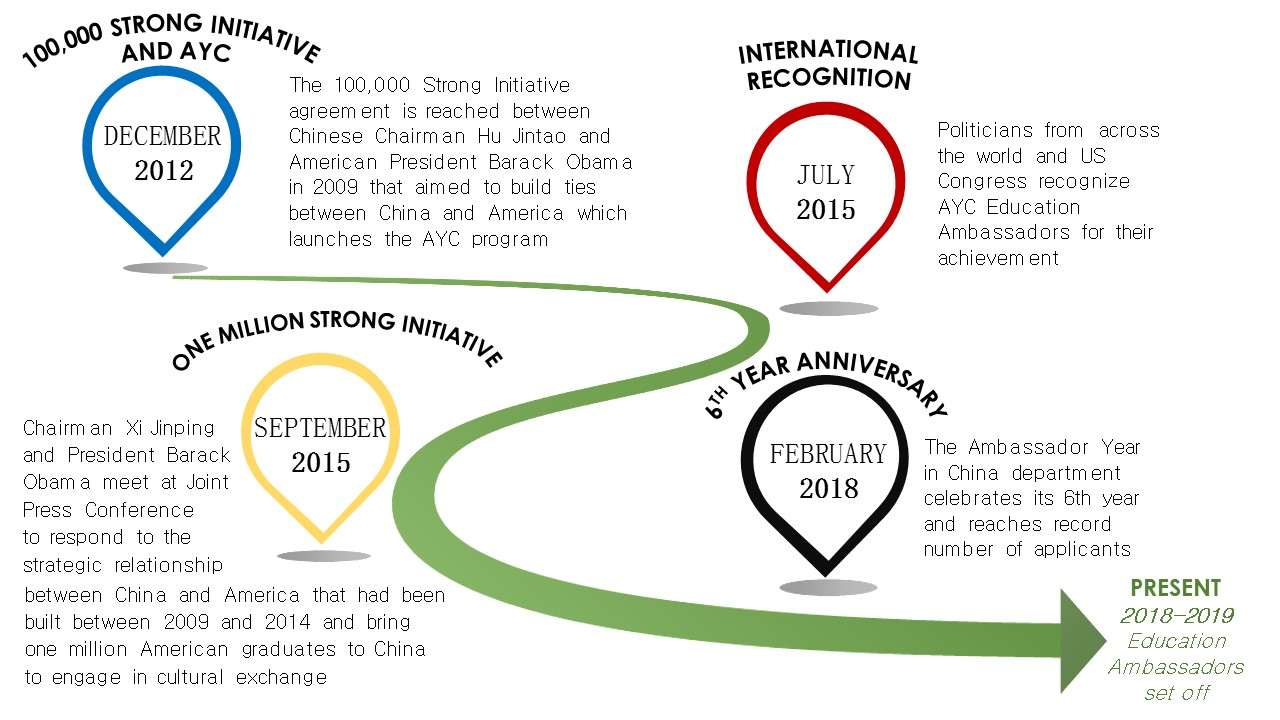AmBASSADOR Year in China Timeline
What is AYC?
Ambright Education Group's Ambassador Year in China program (AYC) was officially launched in the autumn of 2012. The AYC program was created to echo the 100,000 Strong Initiative, an agreement reached between Chinese Chairman Hu Jintao and American President Barack Obama in 2009 that aimed to build ties between China and America. The goal was to send 100,000 young Americans to China to study and build a strong cultural relationship between the two countries. The goal was achieved in 2014.
In September 2015, Chairman Xi Jinping and President Obama brought up the One Million Strong Initiative at a Joint Press Conference, aiming to bring one million American graduates to China to engage in cultural exchange and study. A very important component of the plan was to respond to the strategic relationship between China and America that had been built between 2009 and 2014.
So far AYC has seen more than 500 Educational Ambassadors come to China to teach in more than 200 Chinese public schools, which has benefited over a hundred million Chinese students. The program is dedicated to helping college graduates expand their horizons and enhance their careers by spending an academic year teaching, studying, and immersing themselves in cities across the People’s Republic of China. AYC is designed to give participants a chance to gain a deeper understanding of Chinese culture and to strengthen their professional skills while also assisting teaching English language.
AYC has gained a lot of support from government and political circles both in America and China. Chris Van Hollen, the junior United States Senator from Maryland; Tim Walz, Minnesota's First District Congressman; Paul Tonko, the United State’s House of Representative from New York; and Jiang Shengxiang, the Deputy Director General of the Chinese Education Bureau have all sent encouraging letters to Ambassadort to support AYC program.
The success of AYC has raised passionate discussion and had a warm response from both domestic and foreign media in China, including People’s Daily, Guangming Daily, USChinaPress.com and World News (wn.com).


